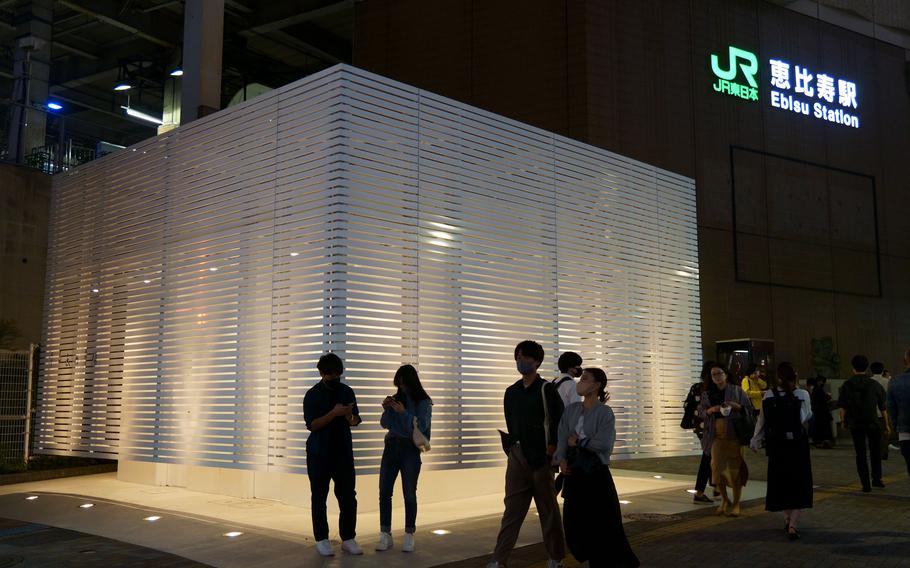
In the popular Shibuya ward in central Tokyo, a group is working to turn public restrooms into works of art that are pleasant places to visit and accessible to any user. (Akifumi Ishikawa/Stars and Stripes)
Restrooms in Japan are widely known for being clean and high-tech, with bidets, heated toilet seats and even the recorded sound of flushing water so others won’t hear you doing your business.
But some public facilities are known to be dirty, dark and unpleasant to use.
In the popular Shibuya ward in central Tokyo, a group is working to turn public restrooms into works of art that are pleasant places to visit and accessible to any user.
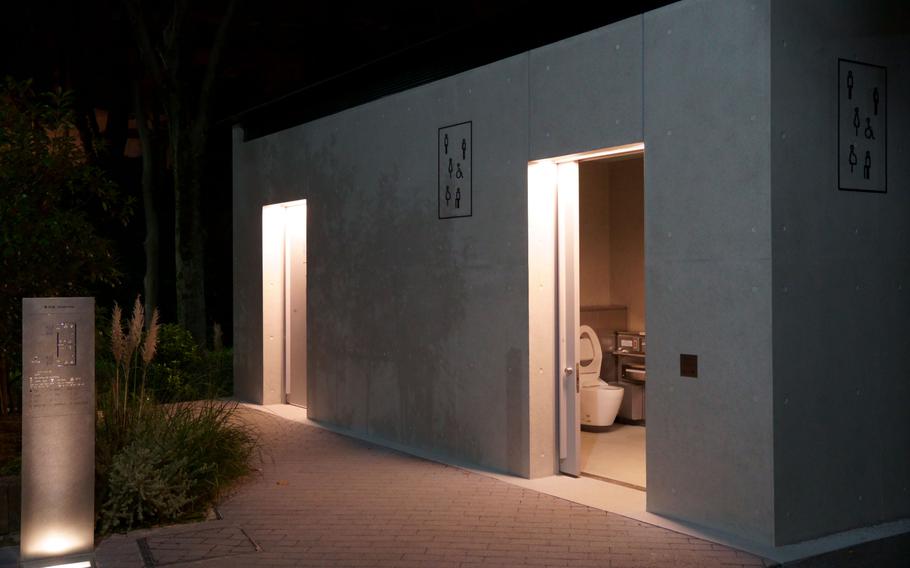
In the popular Shibuya ward in central Tokyo, a group is working to turn public restrooms into works of art that are pleasant places to visit and accessible to any user. (Akifumi Ishikawa/Stars and Stripes)
The nonprofit Nippon Foundation, a philanthropic organization with projects at home and around the world, noticed that despite the reputed cleanliness of Japanese toilets, public facilities are often avoided. With the help of 16 prominent Japanese architects and designers, the group began a project — called The Tokyo Toilet — to redesign 17 public restrooms in Shibuya in an effort to improve their image.
The facilities are also cleaned more often than usual and are equipped for ostomates and wheelchair users. And all have at least one toilet available for any gender to use.
The bathrooms have unique designs and some even look like artwork. Some have transparent walls and others are mushroom shaped or painted bright red.
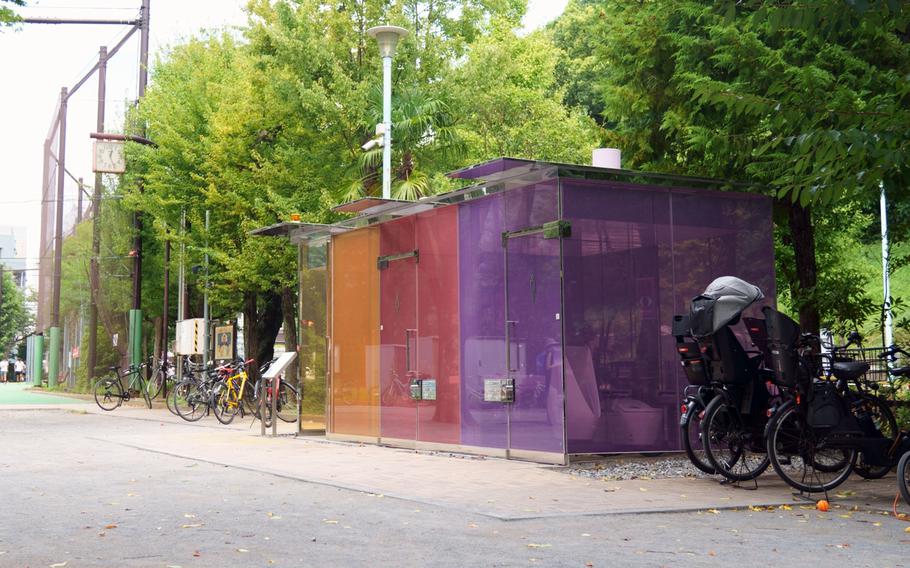
New public toilets at Yoyogi Fukamachi Mini Park in central Tokyo are transparent. There, you’ll find users nervously opening the doors to see how the bathrooms work. (Akifumi Ishikawa/Stars and Stripes)
The restrooms at Haru-no-Ogawa Community Park and Yoyogi Fukamachi Mini Park near Yoyogi-Koen Station are transparent. There, you’ll find users nervously opening the doors to see how the bathrooms work.
The exterior glass walls use special technology that turns them opaque when the door is locked from inside.
Architect Shigeru Ban explained on the Tokyo Toilet website that the transparent walls allow users to check the restroom’s cleanliness and whether anyone is inside before entering, which also is good for safety and crime prevention. At night, the bathrooms light up to become additional lighting in the park.
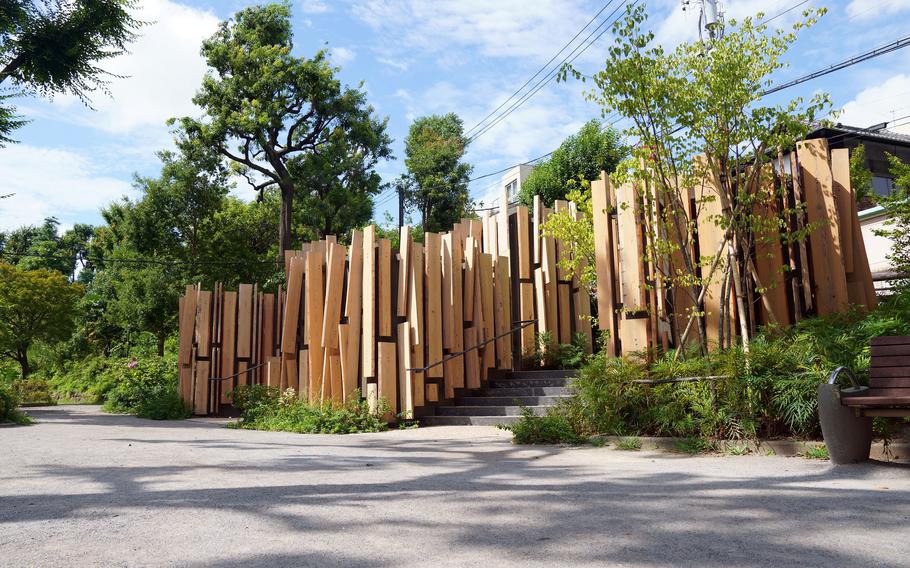
Eared cedar boards, iconic of architect Kengo Kuma's designs, are used outside and inside of each separately built restroom, which together resemble a village full of greenery inside Tokyo's Nabeshima Shoto Park. (Akifumi Ishikawa/Stars and Stripes)
Another architect Kengo Kuma, who helped design the Japan National Stadium in Tokyo for the 2020 Summer Olympics, designed the restrooms in Nabeshima Shoto Park.
Eared cedar boards, iconic of Kuma’s designs, are used outside and inside of each separately built bathroom, which together resemble a village full of greenery inside the park. Each accommodates different needs, such as for families, dressing and grooming or wheelchair users; they are not gender-specific.
A restroom at Nanago Dori Park, minutes away by foot from Hatagaya Station, is shaped like an igloo. It also has unique functions. It operates by voice command, in Japanese and English, allowing people to use the facility without physically touching the doors or toilet levers.
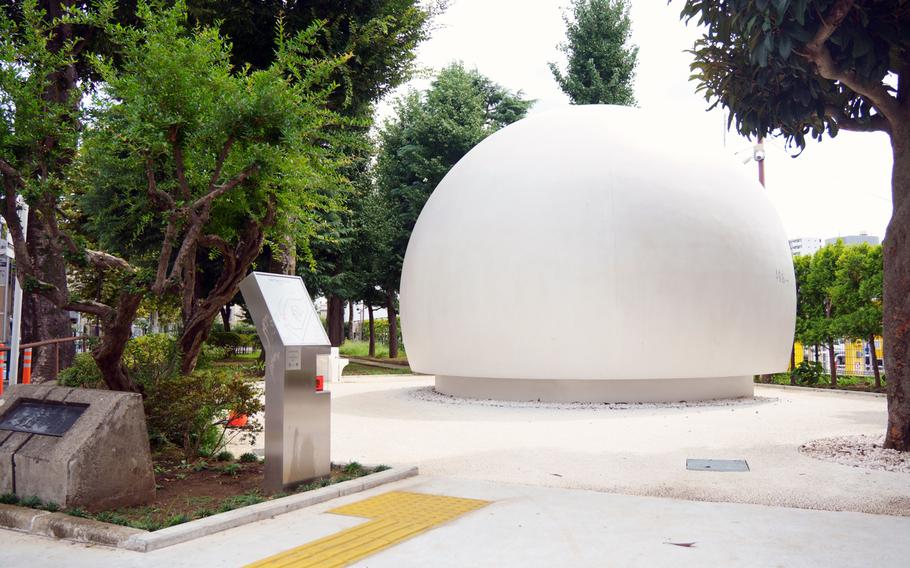
The new public restroom at Nanago Dori Park, minutes away by foot from Hatagaya Station in Tokyo, is shaped like an igloo and operated by voice command. (Akifumi Ishikawa/Stars and Stripes)
Kazoo Sato, an executive creative director for advertising agency TBWA Hakuhodo, explained on the website that he found out that users in Europe and the U.S. avoid touching the inside of bathrooms by stepping on levers to flush the toilets and opening bathroom doors with toilet paper.
He said he began exploring the idea of a touchless restroom before the COVID-19 pandemic but it “accelerated the acceptance of this unique user experience in terms of ‘toilet being contactless,’” he stated on the project’s website.
Users first need to scan in a QR code with their mobile device to open the door. Then they need to say, “Hi, toilet” and wait for a beep to give a voice command, such as “flush the toilet” or “start the bidet.”
Several microphones are mounted inside the bathrooms, but when I tried it, it was unable to hear my voice command and kept asking to repeat. Luckily, it understood my command to open and close the bathroom door, so I did not get locked in the bathroom.
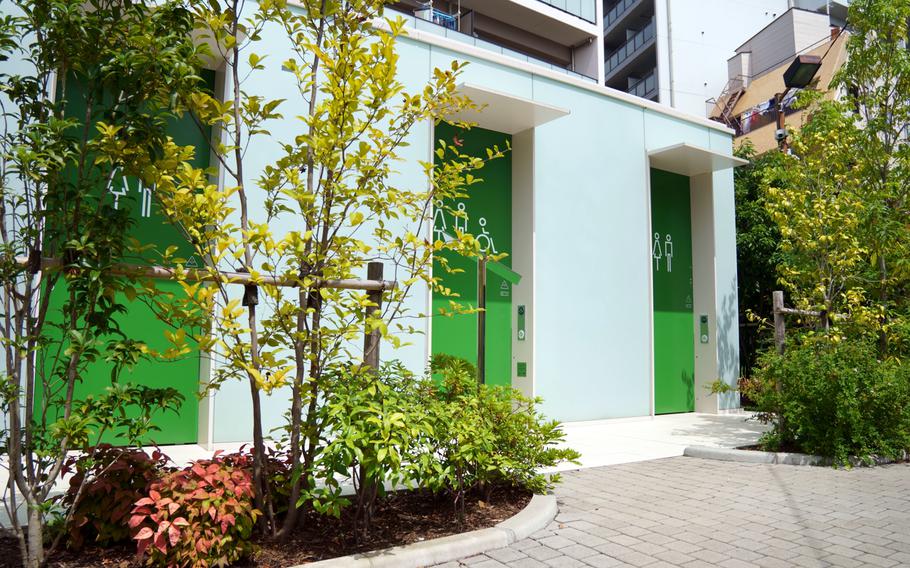
In the popular Shibuya ward in central Tokyo, a group is working to turn public restrooms into works of art that are pleasant places to visit and accessible to any user. (Akifumi Ishikawa/Stars and Stripes)
Although the project is ongoing, there are plenty of restrooms to see. Many are near major tourist spots in Shibuya and Harajuku. Remembering where they are may help when you need to use bathrooms while on an outing, but you may also make a walking trip out of visiting each one.
Thirteen of the 17 restrooms have been completed, and four more are expected to open by the end of this year in the Sasazuka, Hatagaya, Sendagaya and Yoyogi areas of Shibuya ward.
On the QT
Location: Scattered throughout Shibuya ward, including areas near Shibuya, Ebisu and Harajuku stations.
Directions: Maps of the restrooms can be found online at tokyotoilet.jp/en.
Hours: Available anytime.
Costs: Free
Information: Online: tokyotoilet.jp/en